Return to Sport following Meniscus Surgery
Arthroscopic meniscal surgery is the gold standard treatment for meniscal tears. The two most common treatment options include removing part of the meniscus (partial meniscectomy) or meniscal repair. The ability for you to return to sport or return to your daily activities is dependent on whether any simultaneous injuries are identified and the procedure(s) performed.
Meniscectomy
Returning to sport following a meniscectomy involves advancing activities as you can tolerate. Since there is no concern for healing any part of the meniscus, rehabilitation may be advanced much quicker than a meniscal repair surgery. Dr. Chahla follows evidence from the literature that supports the use of a 3-phase rehabilitation protocol:
0-2 Weeks
From surgery through two weeks, you will be encouraged to weight bear, begin range of motion exercises, and work to strengthen the quadriceps, hamstring, and core muscles as tolerated.
2-4 Weeks
From two to four weeks, patients usually start to incorporate sport-specific exercises and can begin to engage in cardio training.
4-6 Weeks
By four to six weeks, patients should continue to advance sport-specific training and strength training. Dr. Chahla will release you to re-engage in competitive sports once you can demonstrate equal strength in both extremities, full range of motion, and return of endurance in sport-specific activities. This usually occurs within four to six weeks.
Importantly, full quadriceps muscle function and strength is often the rate-limiting step during rehabilitation that prevents most athletes from returning to sport. Consequently, it is crucial for you to engage in early strengthening exercises throughout the recovery period. Examples of these exercises include quad sets, straight leg raises, and squats (shown below).
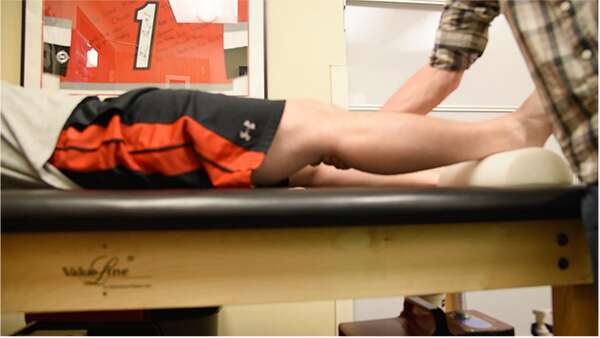
Quad sets: While sitting on the floor, straighten your operative leg out in front of you. Tighten the muscles on top of your thigh by pressing the back of your knee flat down into the floor. Hold for about 6 seconds, then rest for up to 10 seconds.
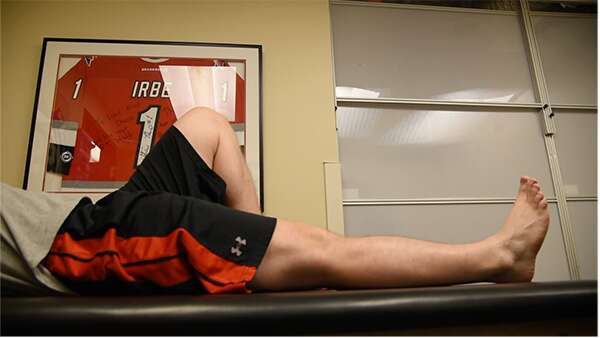
Straight leg raises: While lying on your back with your operative leg extended, bend the non-injured knee. By contracting the muscles on top of your thigh, lift the straight leg 6 inches off the ground. Hold for 3 seconds, then rest for up to 10 seconds.
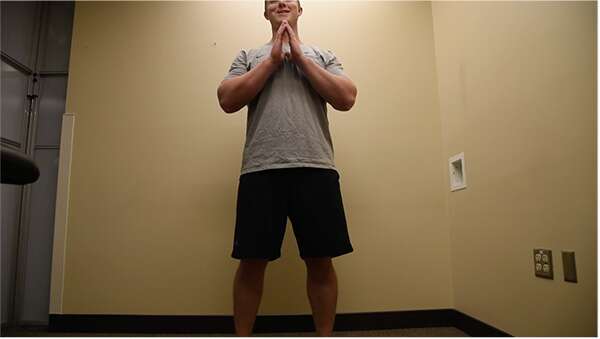
Squats: Set your feet hips width apart and slowly lower your body down as your drive your hips behind you to allow weight to be placed in your heels. While down, slowly shift your weight to the operative side and hold for 2-3 seconds before coming back to center. Push up with your heels to return to the starting position. Rest up to 10 seconds.
Many studies have investigated the time it takes for athletes to return to sport following a partial meniscectomy. The evidence reports a range from 19 to 89 days, depending on many factors such as age, level of competition, and type of tear.
Meniscal Repair
Meniscal repairs offer the benefit of preserving the native meniscus, but they require a longer rehabilitation protocol as compared to a meniscectomy. The most important difference is that rehabilitation following a meniscal repair requires limiting early postoperative weight bearing and knee flexion beyond 90 degrees to protect the repair. A multi-phase progressive rehabilitation protocol is instituted following a meniscus repair.
0-2 Weeks
From 0 to 2 weeks, patients will wear a brace in full extension and only allowed to touch down weight bear with crutches while in extension. While they are not weight bearing, patients may take off the brace and start to work on range of motion from 0 to 90 degrees of flexion. Isometric strengthening exercises of the quadriceps (quad sets, straight leg raises, heel slides) will also be initiated during this phase.
2-4 Weeks
From 2 to 4 weeks, patients will advance to full weight bearing as tolerated by pain; however, they will not be allowed to full weight bear past 90 degrees of flexion. This phase will start to initiate closed chain exercises, such as terminal knee extensions with or without resistance bands. Range of motion exercises will be advanced beyond 90 degrees of flexion.
4-8 Weeks
From 4 to 8 weeks, patients should expect to discontinue the brace and the crutches if quadriceps strength is adequate to allow normal walking. Strengthening exercises with wall sits are initiated at this time.
8-12 Weeks
At 8 weeks, patients will be allowed to fully weight bear and experience full range of motion without a brace. Hamstring and proprioception exercises will be initiated, which include leg press and lunge exercises between 0 to 90 degrees of knee flexion (shown below). The stationary bike is also usually started at this time to work on cardio training.
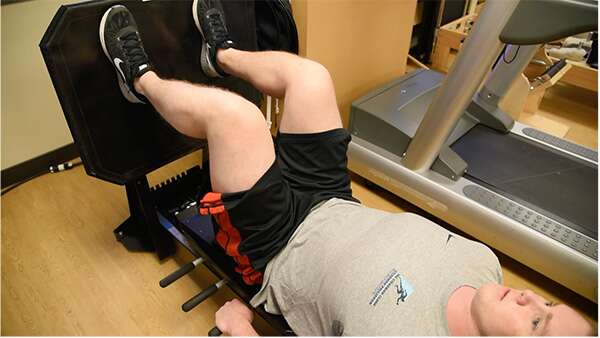
Leg press: With a straight neutral spine, grab the handles. Place your feet on the pad shoulder-width apart and create a 90-degree angle at the knees. Release the leg press handles and slowly straighten your legs as you push through your heels. Pause at the top while ensuring not to lock your knees in full extension, then lower your legs back down towards your chest.
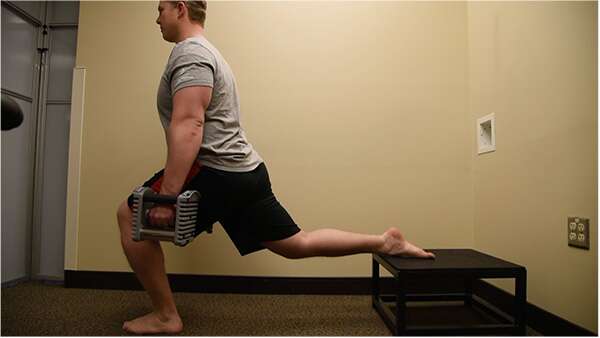
Lunges: With the uninjured leg placed on a step, place your operative leg in front of you. Drop your body through the heels ensuring not to flex past 90 degrees. Keep the front knee behind your toes throughout the entire movement down and up.
12-16 Weeks
From 12 to 16 weeks, most patients will start to gradually increase strength and range of motion exercises and activities including single leg strengthening exercises. Swimming may be initiated as early as 12 weeks, while sport specific activities and running/jumping protocol may be started at 16 weeks.
The literature provides good evidence to suggest most athletes can expect to return their sport approximately 5 to 6 months following surgery.
Here at Midwest Orthopaedics, we use a carefully structured rehabilitation program designed by Dr. Chahla and his team of physical therapists to advance patients based on milestones. This allows patients to advance when they are functionally ready rather than at non-specific set time points. The goal is to restore daily function and pain free living.Contact Dr. Chahla in Chicago to schedule a consultation today.
At a Glance
Dr. Jorge Chahla
- Triple fellowship-trained sports medicine surgeon
- Performs over 500 surgeries per year
- Assistant professor of orthopedic surgery at Rush University
- Learn more


